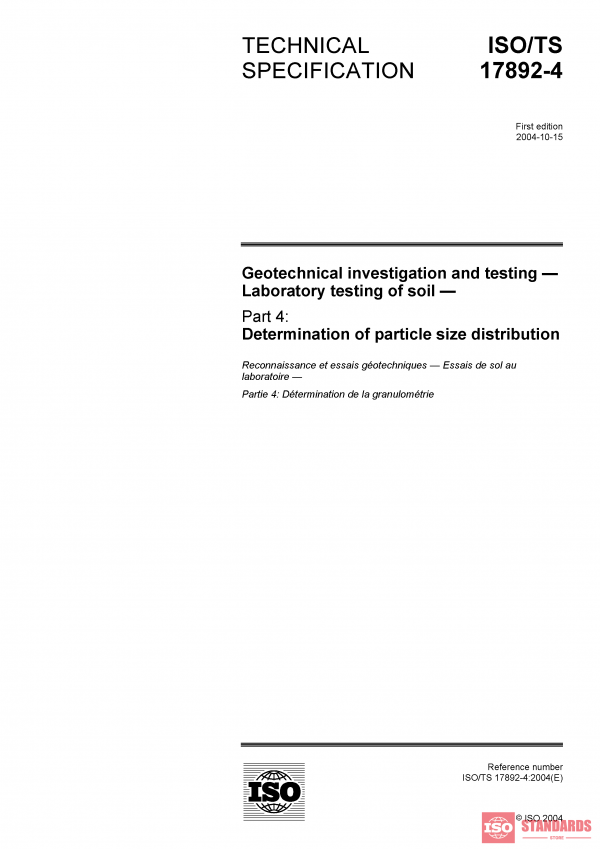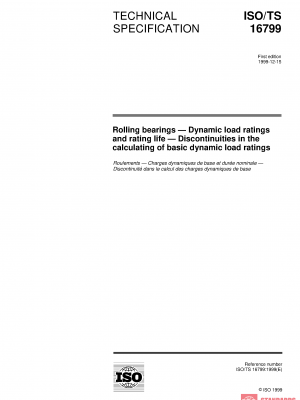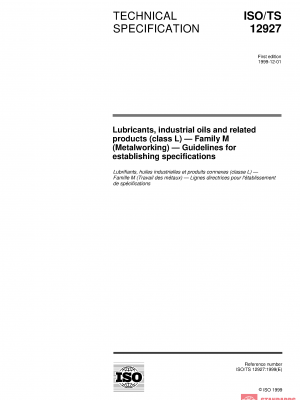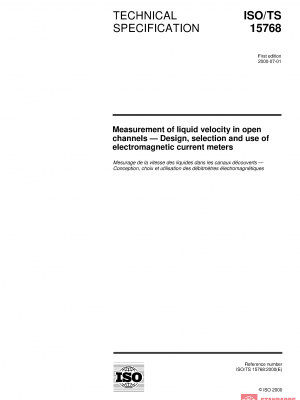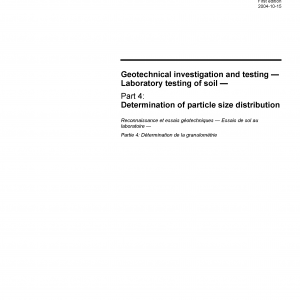ISO/TS 17892-4:2004 PDF
Original price was: $65.00.$50.70Current price is: $50.70.
Geotechnical investigation and testing — Laboratory testing of soil — Part 4: Determination of particle size distribution
ISO/TS 17892-4:2004 describes methods for the determination of the particle size distribution of soil samples.
The particle size distribution is one of the most important physical characteristics of soil. Classification of soils is mainly based on the particle size distribution. Many geotechnical and geohydrological properties of soil are related to the particle size distribution.
The particle size distribution provides a description of soil, based on a subdivision in discrete classes of particle sizes. The size of each class can be determined by sieving and/or sedimentation. For soils with less than 10 % fines, the sieving method is applicable. Soils with more than 10 % fines can be analysed by a combination of sieving and sedimentation.
Sieving is the process whereby the soil is separated in particle size classes by the use of test sieves.
Sedimentation is the process of the setting of soil particles in a liquid. The difference in settling rate enables the particle size classes to be separated. Two sedimentation methods are described; the hydrometer method and the pipette method.
The methods described are applicable to all non-cemented soils with particle sizes less than 125 mm.
Depending on the purpose for the determination of the particle size distribution, pretreatment or correction for calcium carbonate, dissolved salts and/or organic matter can be required. The use of these methods should be stated in the laboratory report.
Modern methods that incorporate detection systems using x-rays, laser beams, density measurements and particle counters are not covered by this document.
| Edition | 2004 |
|---|---|
| Standard Part No | 4 |
| Published Date | 2004 |
| Published By | ISO/TS |
| Page Count | 26 |

